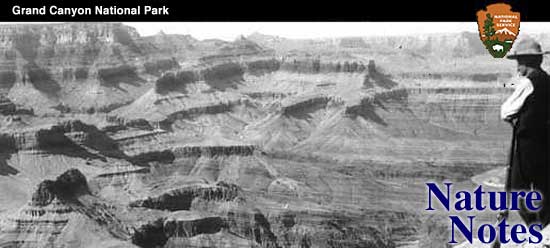

|
IN 1931, the writer was invited by Dr, J. C. Merriam to outline a program of research on the pre-Cambrian rocks of the Grand Canyon for the Carnegie Institution of Washington and to undertake investigation of the Algonkian rocks in the region. A brief trip was made to the Canyon in that year. Illness prevented continuation of the work in 1932. In May of this year, the writer, accompanied by C.E. Van Gundy, Georges Vorbe, and E. C. Doell, graduate students of the University of California, began an intensive study of the Algonkian formations exposed in the vicinity of Bright Angel Creek. A map of this district has been made, showing the distribution of Archean, Algonkian and Cambrian strata, detailed sections have been measured, conditions of deposition studied, and an extensive suite of specimens collected for laboratory study. An expedition was made into the difficultly accessible Nankoweap and Kwagunt Valleys in the eastern part of the Grand Canyon to investigate the Chuar series, upper member of the Algonkian group. This region, studied over fifty years ago by the late Charles D. Walcott, has been visited by few geologists since that time. The Chuar strata in the Nankoweap and Kwagunt Valleys have been mapped by Vorbe and Doell, sections have been measured, and collections made for laboratory study. Next year the work in this eastern district, both north and south of the Colorado River, will be continued until the entire area of Chuar and Unkar formations is covered. Other areas to the west where the Unkar is exposed also will be investigated. After completing the work in the Bright Angel district, a brief trip was made into central Arizona by Hinds and Van Gundy, to inspect sections of the Apache and Mazatzal groups which also are assigned to the Algonkian. These groups have been correlated in various ways with the Grand Canyon series. Owing to the many phases of the research, regarding which further information is essential, a statement of results does not seem advisable at present.
| ||||||
| <<< Previous | > Cover < |
vol8-5f.htm
14-Oct-2011